December Monthly Agenda
Greetings.
There will be two workdays this month, but might have a third near the end of the month.
- Sat Dec 2nd, 9 am - noon.
- Sat Dec 16th, 9 am - noon.
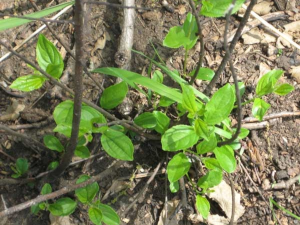
Continue Clearing F2.4.3
For the past few years, I've been slowly clearing the workzone near the upper parking lot, and I hope to have have most of it cut by the end of the month. Well...most of the bad stuff.
This will leave us with a nice amount of wood that can then be burnt in 2024, if the weather cooperates. Probably require at least three workdays to burn everything.
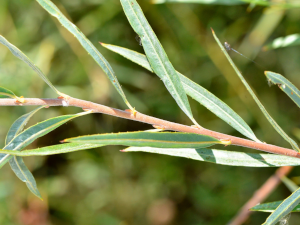
Willow/Dogwood
On the 18th I will have the brushsaw, and so I will be focusing on willow and dogwood next to the lake. Park at the second lot closest the lake. The intent is to clear the brush so that the teasel rosettes will be exposed and treated in spring. That is the real enemy. Primarily looing for volunteers to help gather up the cut brush, or treat cut stems if you have a license.
I don't expect I'll have the manpower to treat every stump on the day, but I'm less worried about native species resprouting. I have a small supply of Garlon 4, and that give me more flexibity with regarding to timing.
Seeding
I'll probably head out to the preserve one Sunday and spread all the seed I collected this fall. This will be in addition to whatever seed I get from the District in Jan.
I am working on creating webpages to track the Oakhurst enrichment status, and I will update them with new data once I have broadcast the seed. The pages are still a work in progress, but they can be found here
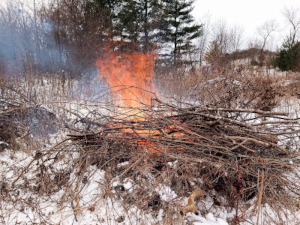
Burn Season
Now that I have finally accepted that summer is over, it is time to start thinking about burning brush piles. In order to burn, there needs to be a layer of snow on the ground, making burning hard to plan ahead. Given that this is also an El Niño year, winter may be milder and dryer than usual - making snow more unpredictable.
If there is snow on the ground on either Saturday or Sunday, I will take advantage and attempt to burn that weekend. As I cannot burn alone, I will reach out to volunteers to beforehand, and if you can attend, please RSVP. If I don't receive any RSVP, then the burn day will be cancelled.
Last Month Review
Spindle Tree
Now that the poison ivy had dropped its leaves, I returned to the workzone near the upper parking lot to take care of the the European spindle tree. This is a Euonymus species, related to burning bush and wahoo, and tricky to tell apart when not flowering. This area was cleared in 2022, so there were still a few missed shrubs and resprouts to deal with.
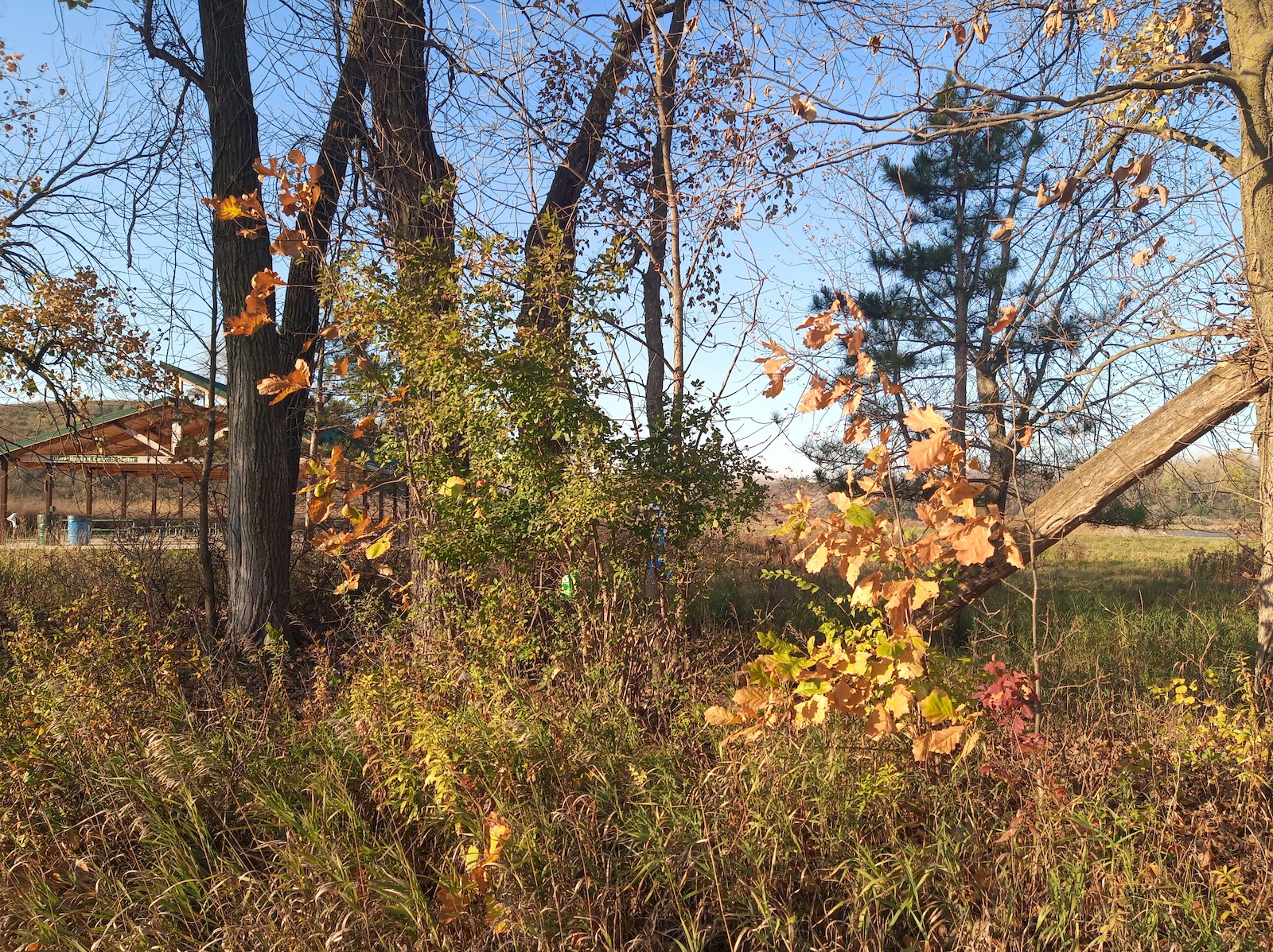
The spindle tree is the green shrub closest to the cottonwood trunks. We also have a couple of baby bur oaks in the foreground.
Lakeside Reprouts
For one workday I returned to the lakeside to deal with resprouts in two adjacent workzones.
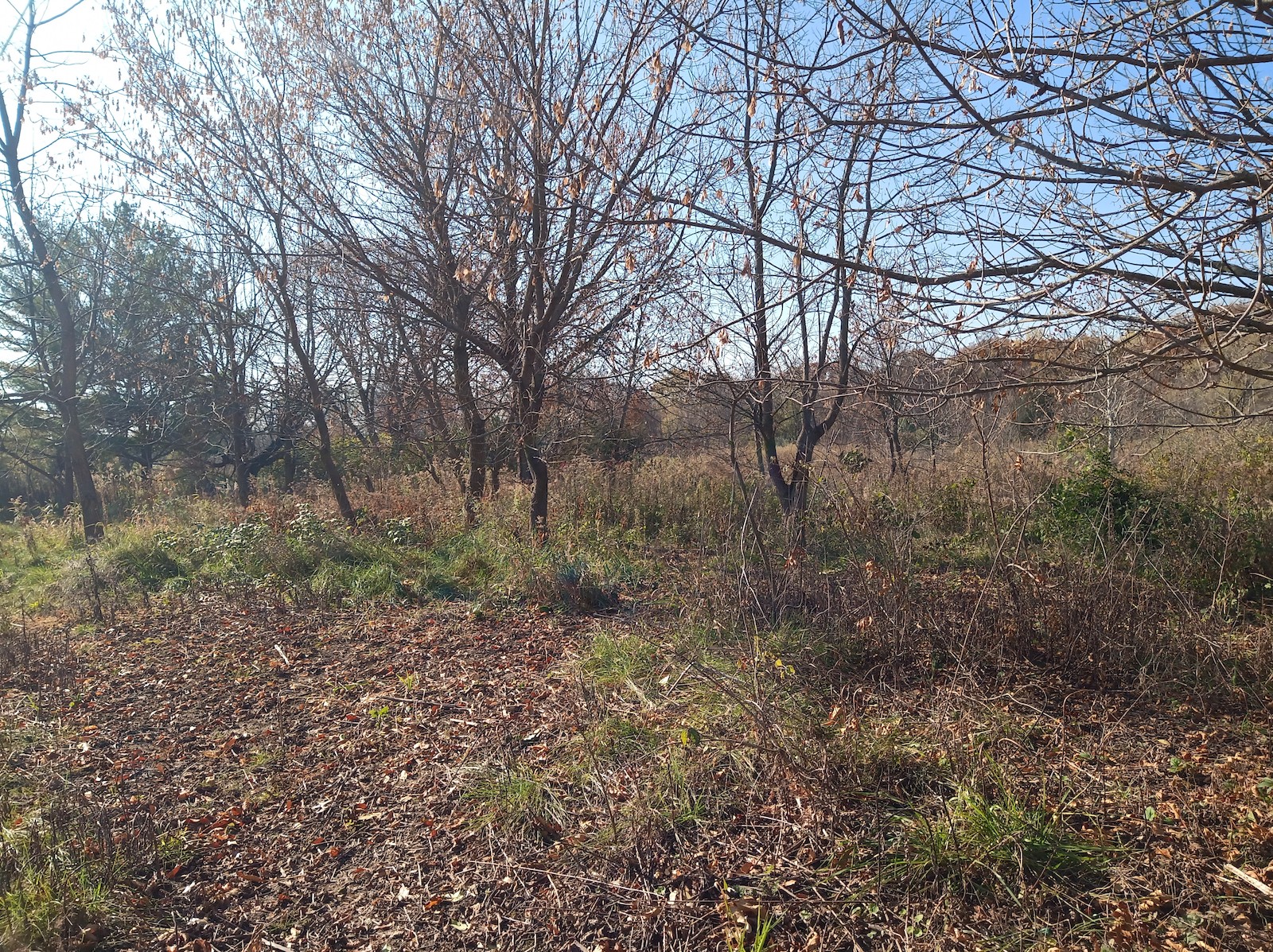
I started work in G1.4.3 back in 2019, and spent 5 hours with resprouts last year, so this is a second follow-up. Most of the resprouts are found under boxelder and pin oak trees. I am trying to plant prairie in the field where I took the photo, so this area is a priority. The bare patch of ground was a colony of teasel rosettes, but hopefully will fill in with white snakeroot.
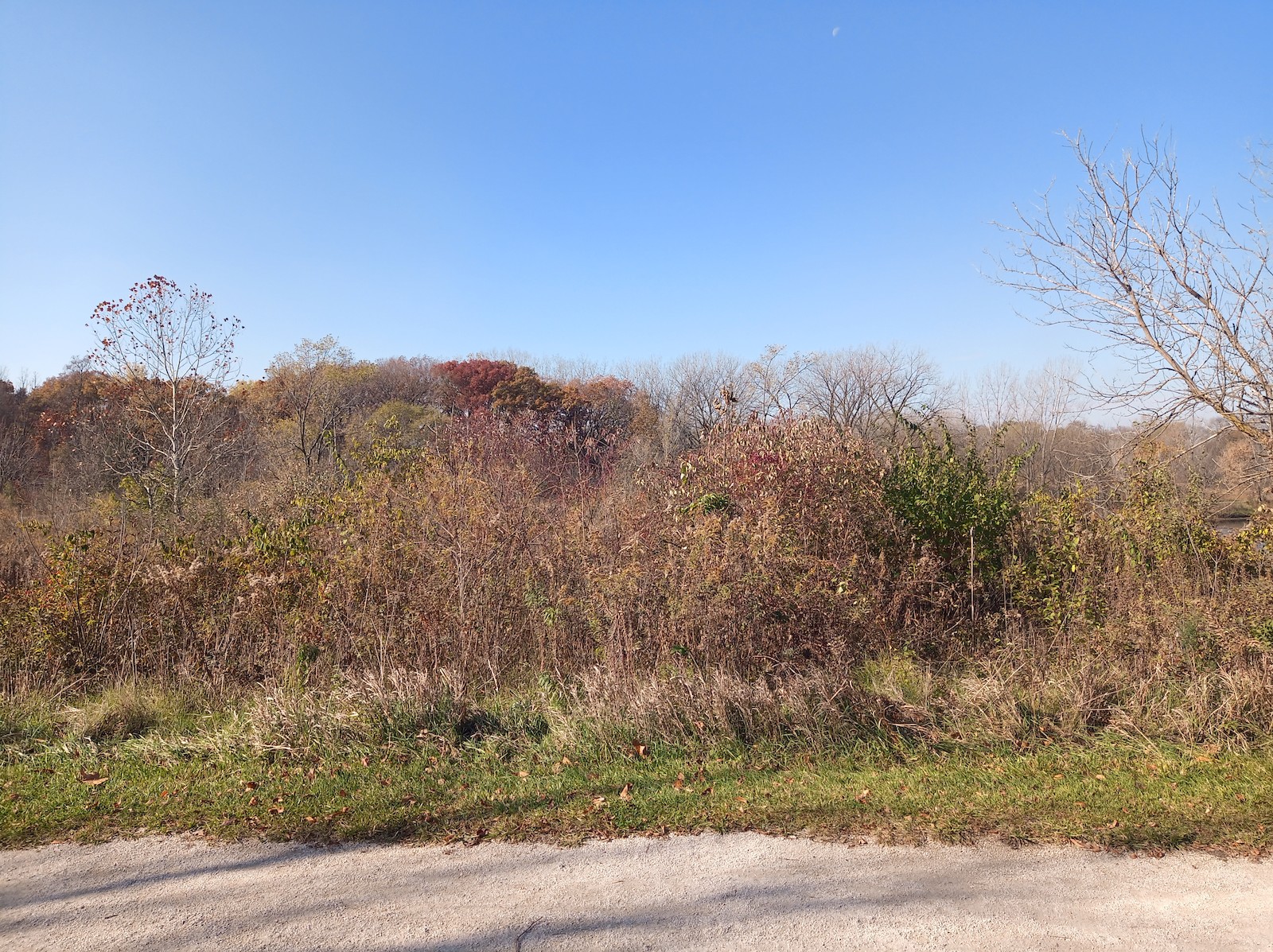
On the other side of the trail (W1.1.3) we have honeysuckles and autumn olives (both still green) growing amongst the dogwood. I also started work back in 2019, but have not followed up here before, so the shrubs are larger. I also cut back some of the grape which was becoming a little rambunctious. Still more work to do here, and need to burn a brush pile this winter.
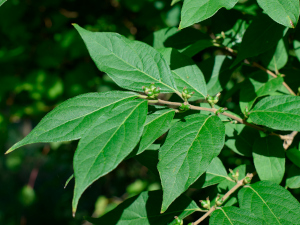
Honeysuckle / Bittersweet
While I had initially intended to work on resprouts by the lake, it was a little cold out, so decided to work in a more sheltered area out of the wind. So my scout volunteer and I cut more honeysuckle in the workzone near the upper parking lot. As there are still large shrubs to take out, this is an easy task for a volunteer not acquainted with the plant.
I had visited the area the day before to cut more of bittersweet, some of which had unfortunately fruited. However, it would have been a lot worse if we hadn't had a workday back in spring.
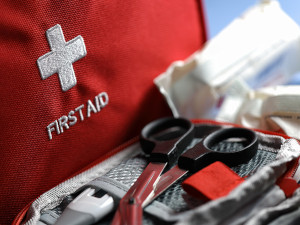
First Aid and Bleeding Control
So in November I completed my Bleeding Control class which is a new requirement for using the chainsaw. At the class it was mentioned that you also need the first aid certification - which was news to me. So I checked the email that talked about the bleeding control requirement, and yup, it was there in black and white. Somehow I completely missed that.
So this month I finally attended the First Aid class, and received my certification.
Let's Brainstorm
Herbicide Wick Applicator
With all the cutting I want to do will the brushsaw, and not enough people to herbicide, I realize I need to come up with a better solution than the buckthorn blaster. I like the blaster, but it requires a lot of crouching and bending in order to use.
So I am looking for a better way to herbicide that can be done standing up. I know you can make a wick applicator using PVC pipe that has a sponge at the tip, or simply spray the stump with a pump sprayer
However, what I want is a combination of the two. That is, a wick applicator that can be added to the end of a herbicide wand. Using a herbicide pump means you can control how often the wick applicator is charged with herbicide - which would minimize potential leaks. This way you can walk around with the sprayer, and simply touch the wand against each stump, pressing the handle to release more herbicide when needed.
I am therefore looking for ideas on how to implement this, such as what type of wick material, how to it attach to the wand, etc. A very simple solution may be a sponge wrapped in a piece of fabric that is then duct-taped to the end of the wand. Sponge by itself will deteriorate quicky when treating thin stems, which is why I think a tougher fabric is needed to contain it.
If this sounds like a practical idea, then let's discuss and experiment to see what works.

 Volunteering
Volunteering Safety
Safety Wildlife
Wildlife Newsletter
Newsletter